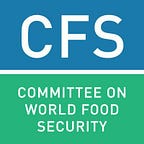Food vs Energy: Biofuels and food security
The rise of biofuels
In response to rising oil prices in the 1970s biofuel markets were created that took advantage of low commodity prices and crop surpluses. Forty years later well over 50 countries have biofuel policies but not all have considered the relationship between biofuels and food security.
Between 2001 and 2011 biofuel production increased from less than 20 billion litres a year to over 100 billion litres a year. The steepest rise was in 2007–2008 which paralleled a sharp rise in food prices that triggered riots in many parts of the world. The steeply rising demand for the production of biofuel was identified as an important factor in these food price rises from a wide range of actors including civil society and the World Bank.
The biofuel generations
The degree to which biofuels compete with food production depends on the choice of crop, land use, water needs and other natural resources. Biofuels can be classified into three generations:
- First generation biofuels usually refers to ethanol produced from sugar rich crops (sugar beet, sugar cane, sweet sorghum), starch rich crops (corn, wheat, cassava) and to biodiesel made from oilseed crops (soybeans, sunflower, rapeseed, palm) or animal fat and pure plant oils. In most cases these crops can also be used as food or feed
- Second generation biofuels can be made from non-edible parts of the plants like corn husks, stalks, forestry residue, perennial grasses, animal and municipal waste
- Third generation biofuels are those that do not compete with food crops or land such as algae based fuel
The initial timeline for the deployment of second generation biofuels was overly optimistic but new technologies and learning from experience is continually lowering costs and increasing processing efficiency. While second generation biofuels are not made from food or feed crops, they do compete with other resources that can be used for food production so it’s important to continue to monitor their impact on food security.
Food security comes first
In 2013 the Committee on World Food Security (CFS), the leading multistakeholder platform for food security and nutrition policies, commissioned an expert’s report on Biofuels and Food Security which examined the complex interlinkages between the two. Following the report, the Committee agreed a set of policy recommendations to help ensure that the ever growing biofuel sector doesn’t threaten food security.
The recommendations underscored that food security and the progressive realization of the right to adequate food in the context of national food security should be priority.
Biofuels shouldn’t compromise food security and should especially consider women and smallholders due to their high level of importance in achieving food security.
It was also recommended that biofuel policies be reviewed to assess the opportunities and risks they may present for food security and that biofuel production supports sustainable development. These and other measures recommended by the Committee such as guidelines on land tenure and responsible investment in agriculture and food systems are aimed to ensure that food security and nutrition always comes first.
The Committee on World Food Security (CFS) is leading multi-stakeholder platform for food security and nutrition policy guidance. This article is based on the CFS High Level Panel of Experts on Food Security and Nutrition report on Biofuels and food security produced in 2013. At CFS40 a set of policy recommendations on Biofuels and food security were endorsed. These policy recommendations can be used by any stakeholders.
